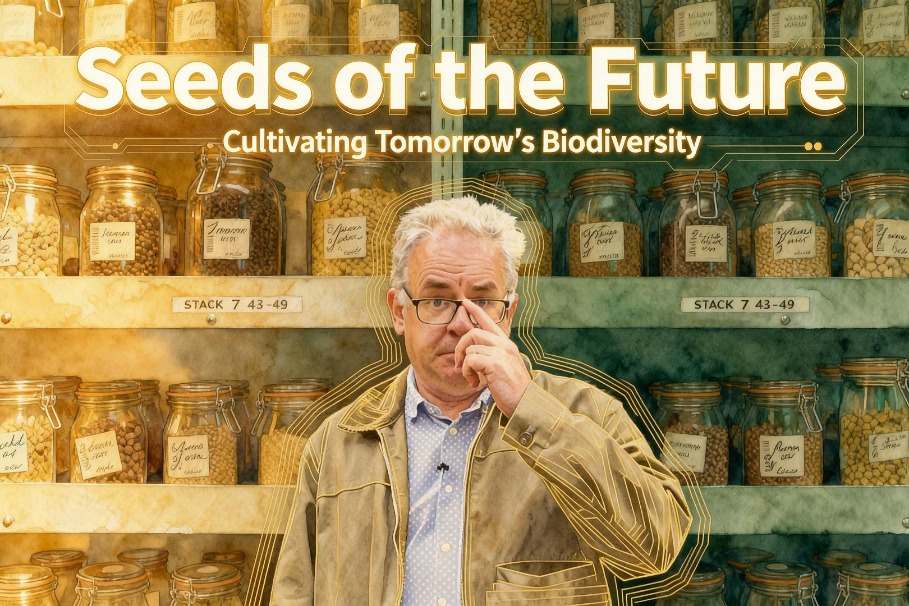Museum creations spark frenzy
As the younger generation learns more of China's history, replicas of iconic relics let them take home a little piece of the past, Deng Zhangyu reports.
By Deng Zhangyu | China Daily Global | Updated: 2024-12-10 09:02

On a cold December morning, the queue to enter the National Museum of China in Beijing winds hundreds of meters around the landmark. Most are eagerly waiting to buy a refrigerator magnet shaped like a phoenix coronet, a popular item in the museum's collection.
Liu Kan is one of the hopeful buyers lining up in the cold wind. To ensure she could get one of the 3,000 magnets sold each day, the 28-year-old tourist from Shanghai arrived at the museum at 6:30 am. After entering at 9, she bought both the metal and wood versions of the phoenix coronet and excitedly took photos of her new purchases.
"The crown magnet is very popular. Before arriving, I found many tips online on how to buy it easily. It's very beautiful," says Liu.
Since October, passionate visitors like Liu have formed long lines outside the museum every day before it opens. Within three months, more than 530,000 of these magnets have been sold, making it the museum's most sought-after product in nearly two decades.
"The popularity of the crown magnets is beyond our expectations. It has become a must-buy item," says Liao Fei, who is in charge of cultural and creative products at the National Museum of China.
With the country's "museum fever" rising, the trend of attending exhibitions, purchasing cultural and creative items, and immersing in the grandeur of Chinese civilization is gaining traction. Experts note that visitors flock to exhibitions or hope to acquire cultural and creative products, explaining the immense popularity of the coronet-shaped magnets.
The crown magnet is designed after a coronet worn by Empress Xiaoduan of the Ming Dynasty (1368-1644). This exquisitely crafted coronet is adorned with over 500 rubies and sapphires and more than a thousand pearls, representing the pinnacle of ancient craftsmanship. It also features unique techniques, such as diancui, which involves delicately attaching dyed bird feathers to metal works.
Liao says that since this year, because so many people want to see the coronet and take photos, the museum has set up a separate space for it and requires visitors to queue up to take photos with the crown one at a time. In the summer, the line of people waiting to see the coronet reached hundreds of meters and extended across several exhibition halls.

As of Nov 28, the National Museum of China has amassed 6.3 million visitor reservations, with over 20,000 visitors daily, representing a 10 percent increase from the previous year.
"Interesting cultural and creative products can attract more people to museums. When people see our crown magnets online, they want to see the artifact and learn about its story," says Liao.
In addition to offering 3,000 crown magnets daily in a special section of the museum hall, the museum also sells limited quantities online. Each day, there are 1,000 metal items and 500 wooden items available on their online Tmall and JD flagship stores.
Due to high demand, Liao explains that the factory now operates at full capacity. The production line for wooden items has grown from 10 workers to over 40 and the line for metal items has expanded from 15 workers to 65.
Having worked in the museum for two decades, Liao says he has witnessed great changes in the development of museums' cultural and creative products.
In the early 2000s, museums in China replicated their relics. In 2012, they began learning about displaying original relics from their international counterparts, such as the Louvre in France, the British Museum in Britain and the Metropolitan Museum of Art in the United States.
"Now, cultural and creative products from our domestic museums surpass those from abroad in variety and quantity. With the continuous development of our manufacturing industry and advancements in technology, I believe this will greatly enhance the designs of the products," Liao says, adding that many product molds are made using 3D printing technology, which wasn't available five years ago.
- Memories of a master
- Museums as guardians of heritage always look to the future
- People visit exhibition of Chinese art at State Museum of Oriental Art in Moscow
- Singapore exhibition explores Chinese traditional fashion through storytelling
- What's on
- Macao inaugurates cultural heritage preservation center of Palace Museum
- Fine arts lead to enriched students
























